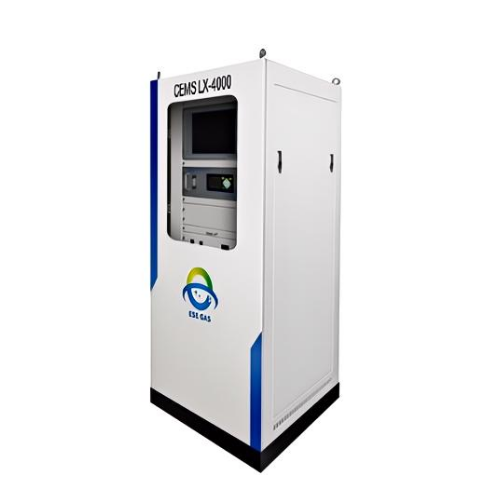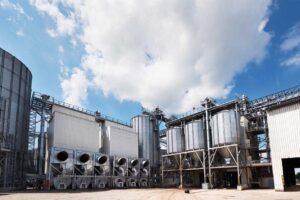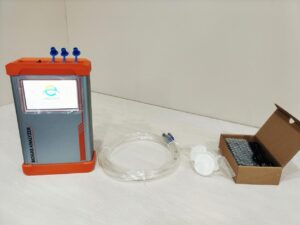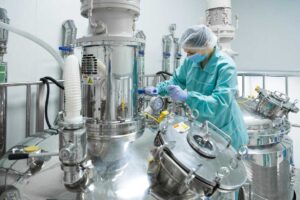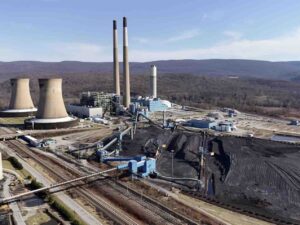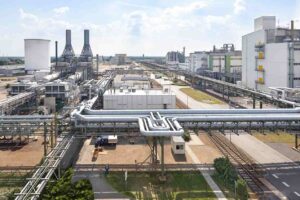In an era of increasingly stringent environmental regulations, industrial plants must ensure accurate, reliable emission measurements. Yet, when selecting a Continuous Emission Monitoring System (CEMS), many companies face a critical technical dilemma: should they choose the hot-wet method or the cold-dry method? Both technologies offer unique advantages and challenges, and making the wrong choice can lead to costly compliance failures or inaccurate data. This article provides a detailed comparison to help decision-makers identify the most suitable method and the top brands offering each solution.
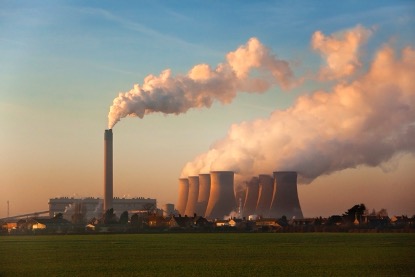
Understanding the Difference Between Hot-Wet and Cold-Dry CEMS Technologies
The hot-wet and cold-dry methods represent two fundamentally different approaches to gas sampling and measurement in CEMS. The hot-wet method maintains the flue gas sample at high temperatures, preserving water-soluble and volatile components. In contrast, the cold-dry method cools and dries the sample before analysis, simplifying instrumentation but risking the loss of certain gases. Each technique is suited to specific emission monitoring contexts, depending on the gas composition, required accuracy, and operational conditions.
Beyond the Basics: Why Technology Choice Matters for Your Emission Compliance
While it’s helpful to understand the technical distinction between hot-wet and cold-dry systems, real-world selection depends on much more than principles. You need to match the right technology to your application, budget, and compliance obligations. Even after knowing how they differ, knowing which brand has the most reliable implementation in your industry can significantly impact long-term results and maintenance costs. Let’s explore both methods in detail.
What Is the Hot-Wet Method in CEMS and Where Is It Most Effective?
The hot-wet method CEMS is a technique that maintains the original temperature and humidity state of flue gas samples during analysis, thereby directly measuring pollutant concentrations in vapour-containing emissions. Unlike the cold-dry method, which removes moisture by cooling and drying samples, the hot-wet approach preserves the thermal and humid conditions of the gas at the point of collection. This method delivers more representative emission data, proving particularly suitable for humidity-sensitive measurements and emission standards. Its core lies in employing specific flue gas analysers capable of stable operation in high-temperature, high-humidity environments, directly analysing undried samples. This avoids sample alterations caused by cooling and drying, such as loss of soluble gases or changes in chemical composition. Its operational principle primarily involves the following steps:
(1) High-temperature sampling: The hot-wet CEMS system utilises high-temperature-resistant sampling probes equipped with heated filters to remove particulate matter. The high-temperature sampling system employs jet pump technology to extract flue gas, drawing it into the system via negative pressure generated by high-pressure gas.
(2) High-temperature transmission: The collected flue gas sample is conveyed through heated sampling tubing to prevent water vapour condensation.
(3) High-temperature measurement: The flue gas sample is delivered directly to the analytical instrument for pollutant determination while maintaining its original temperature and humidity. The measurement data is thermal data, requiring no dry-wet correction..
Notable Brands Offering Hot-Wet CEMS:
- ABB: Known for its ACX series, ideal for high-temperature in-situ analysis
- Siemens: Offers modular hot-wet analyzers for multi-gas monitoring
- ENOTEC: Specializes in heated probe systems for aggressive environments
What Is the Cold-Dry Method in CEMS and When Should You Use It?
Cold-dry CEMS is primarily employed for monitoring atmospheric pollutants emitted from industrial sources. Its core functionality lies in employing condensation dehumidification and filtration dust removal techniques to ensure the sample gas reaches a dry state prior to entering the analyzer. Its operational principle comprises the following key steps:
(1) Sample Gas Extraction: Combustion exhaust gas samples are drawn from the emission source via a sampling probe. These probes typically incorporate dust removal, heating, and temperature control functions to eliminate particulates from the flue gas during extraction and prevent condensation.
(2) Heated sample transport: The extracted sample gas is conveyed via heated transport lines to the analysis hut. These lines commonly employ electric trace heating to maintain the sample gas temperature above its dew point during transit, thereby avoiding condensation.
(3) Pre-treatment System: The sample gas enters the pre-treatment system for further processing. The primary function of the pre-treatment system is to remove moisture, particulates, and other corrosive gases from the sample gas. Pre-treatment commonly involves two stages of condensation, dehydration and fine filtration.
(4) Analytical Instrumentation: The pre-treated sample gas enters the analytical instrumentation for component analysis. Commonly used analytical methods include Non-Dispersive Infrared Absorption (NDIR) and Differential Optical Absorption Spectroscopy (DOAS).
Top Brands for Cold-Dry CEMS:
- Emerson: Known for its modular, easy-maintenance CEMS systems
- SICK: Offers comprehensive cold-dry solutions for industrial automation
- Durag Group: Combines high-precision extractive analyzers with advanced cooling systems
Hot-Wet vs. Cold-Dry: A Side-by-Side Comparison
| Feature | Hot-Wet Method | Cold-Dry Method |
| Sample Handling Temp | Maintained at high temp (~180°C) | Cooled to remove moisture (~4°C) |
| Analyzer Type | High-temp in-situ or extractive | Cold extractive analyzers |
| Suitable Gases | HCl, NH₃, SO₂, NOx | CO, CO₂, NOx, O₂ |
| Accuracy for Wet Gases | High | Moderate to Low |
| Maintenance Complexity | Higher (heating systems, corrosion) | Lower (simple extraction system) |
| Common Industries | Waste incineration, cement, coal power | Gas turbines, biomass, simple boilers |
| Equipment Cost | Higher upfront and operational cost | Lower cost and footprint |
What Factors Should You Consider When Choosing a CEMS Technology?
When selecting a continuous emission monitoring system, the decision should not rely solely on technology—it must align with your plant’s operational needs and regulatory obligations.
If your facility requires real-time in-situ monitoring for reactive gases in a moist or corrosive environment, hot-wet analyzers offer unmatched accuracy. On the other hand, if you’re monitoring stable emissions with limited budget or space, the dilution extraction approach of cold-dry systems might be sufficient. Your gas analyzer selection should reflect both compliance requirements and expected gas behavior post-combustion.
Some essential factors to evaluate include:
- Regulatory compliance: Does your region require dry or wet basis reporting?
- Flue gas measurement stability: Are concentrations of SO₂, NOx, or HCl highly variable?
- Maintenance capacity: Can your team manage heated lines or prefer a simplified system?
- Budget and footprint constraints: Cold-dry systems are typically smaller and cheaper.
Why ESEGAS CEMS Is a Reliable Choice for Industrial Emission Monitoring
For industries seeking a high-performance, customizable solution, ESEGAS offers a robust line of CEMS systems that integrate seamlessly with both hot-wet and cold-dry monitoring methodologies.
ESEGAS designs its gas analyzer systems with precision engineering to handle diverse emission conditions, including high-particulate, corrosive, and high-moisture flue gases. Whether your application requires in-situ monitoring for real-time decision-making or dilution extraction for long-term data logging, ESEGAS systems are tailored to meet strict regulatory compliance standards globally.
Key Features of ESEGAS CEMS:
- Dual-Mode Compatibility: Supports both hot-wet and cold-dry methods for flexible deployment
- Modular Design: Easy maintenance and component replacement without full system downtime
- Advanced Signal Processing: Ensures high accuracy and stability in continuous flue gas measurement
- Remote Diagnostics: Enables efficient system monitoring and troubleshooting from central control rooms
- Industry Proven: Widely adopted in waste incineration, metallurgy, petrochemical, and cement sectors
By integrating ESEGAS CEMS into your environmental monitoring strategy, you not only ensure precise gas detection but also future-proof your plant against evolving emission standards.
Conclusion: Choosing the Right CEMS Method Depends on Your Plant’s Needs
Both hot-wet and cold-dry CEMS technologies are essential tools for industrial emission monitoring. Each has distinct advantages depending on the gas composition, application environment, and regulatory framework. By understanding the working principles, operational requirements, and brand options available, you can make a strategic investment in the most appropriate gas analyzer system. Whether you prioritize high-precision flue gas measurement or seek cost-effective, regulatory compliance, your choice will directly impact the reliability of your emissions data and your environmental performance.




